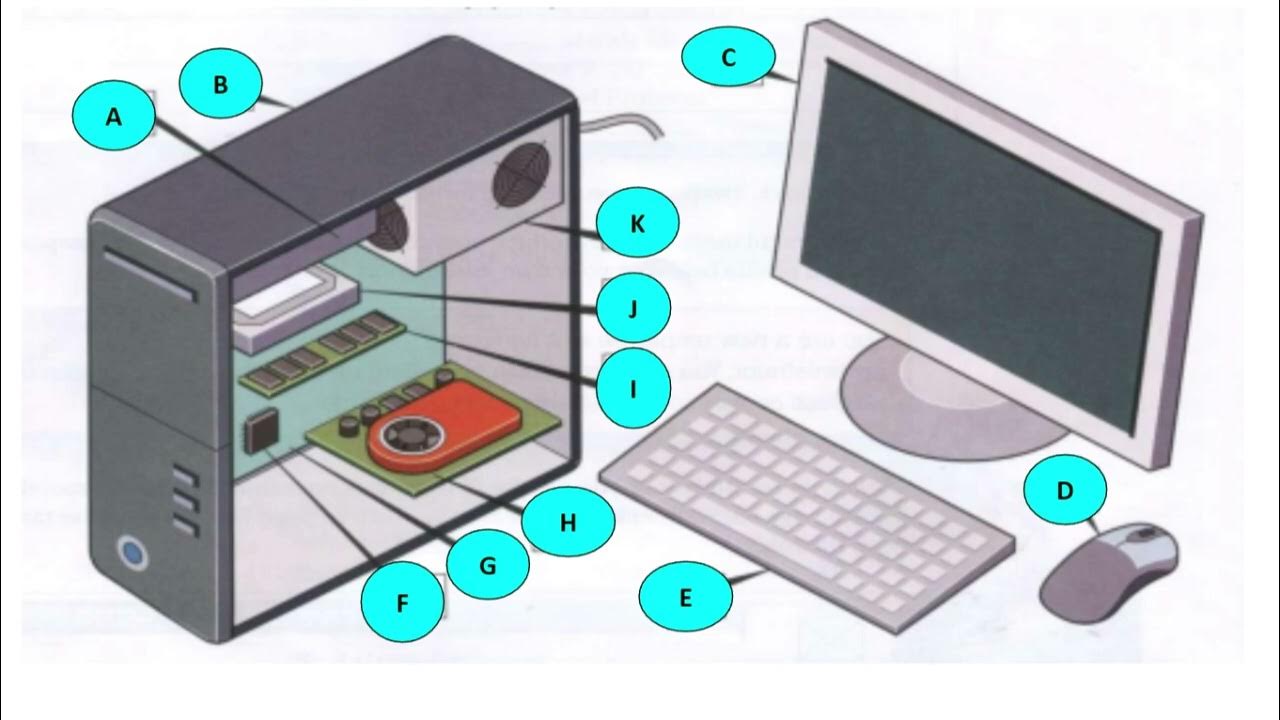BELAJAR MENGENAL NAMA KOMPONEN ALAT BERAT EXCAVATOR 2021
Summary
TLDRThis video introduces beginners to the essential components of an excavator, including key parts such as the bucket, arm, cylinders, and undercarriage. It explains the correct terminology for excavator models, brands, and series, emphasizing the importance of proper naming conventions. The video further explores how each component functions, from the hydraulic systems to the operator's cabin and counterweight. Viewers are encouraged to engage, learn, and ask questions as they gain foundational knowledge of excavator machinery.
Takeaways
- 😀 The video introduces the components of an excavator, specifically for beginners in construction equipment.
- 😀 It highlights the importance of using the correct terminology for excavator parts, such as 'bucket' and 'arm'.
- 😀 Common mistakes include confusing the terms for parts, such as calling the arm a stick or the bucket an arm.
- 😀 The script explains the distinction between different brands and models of excavators, such as Hitachi, Komatsu, and Kobelco.
- 😀 It details the importance of understanding the excavator's series and weight class, which are crucial for identifying the machine's capacity.
- 😀 The video covers the three main sections of an excavator: the front, upper structure, and undercarriage.
- 😀 Key components like the bucket (Paket), link (Lingga), and arm are explained with their respective functions in digging and material handling.
- 😀 The excavator's hydraulic system is emphasized, including the control valves and hydraulic pumps critical to its movement and function.
- 😀 Special functions like the pilot relief valve and signal control valve ensure smooth operation and safety during excavation tasks.
- 😀 The video encourages further learning and clarification from the audience, promoting engagement and understanding of excavator parts.
Q & A
What are the main categories for naming heavy equipment like excavators?
-The main categories include the type of equipment (e.g., excavator, bulldozer, grader), the brand (e.g., Hitachi, Komatsu), the series/model (e.g., Zaxis, PC series), weight class (e.g., 20 tons, 30 tons), generation (e.g., Generation 1, Generation 2), and any special specifications (e.g., long roller, hybrid).
Why is it important to use the correct naming convention for an excavator?
-Correct naming ensures clear communication, especially when discussing repairs or parts replacement. Misidentifying components like calling an excavator 'PC200' when it’s actually 'Zaxis 350' can lead to confusion and improper handling.
What are the three main parts of an excavator's structure?
-An excavator's structure is divided into three main parts: the front end (crowned), the upper structure (includes the body and hydraulic components), and the undercarriage (tracks and lower components).
What function does the bucket serve on an excavator?
-The bucket is used for digging, scooping, and carrying materials. It is one of the most crucial components for the excavator's primary tasks.
What is the purpose of the 'link' in an excavator's arm system?
-The link connects the bucket to the cylinder, allowing the bucket to be moved and operated effectively during digging or material handling tasks.
What is the difference between the 'arm' and the 'stick' in an excavator?
-The 'arm' refers to the component that connects the bucket to the excavator body, while the 'stick' (also known as the boom) extends the reach of the excavator. Sometimes people mistakenly swap these terms, but 'arm' is the correct term for the part connecting the bucket.
How does the hydraulic system function in an excavator?
-The hydraulic system powers various parts of the excavator, including the cylinders, boom, and other components. The system includes pumps, valves, and a control system that allows precise movements and control over the excavator's operation.
What is the role of the 'counterweight' on an excavator?
-The counterweight, located at the back of the excavator, helps balance the machine during operations. It prevents tipping, especially when lifting heavy materials or when the boom is extended.
What components make up the undercarriage of an excavator?
-The undercarriage includes the tracks, rollers (lower and upper), and other components that provide stability and movement. The track link assembly helps the machine move efficiently across various terrains.
What is the function of the 'control valve' in the hydraulic system?
-The control valve is the central unit for regulating the hydraulic system. It controls the flow of hydraulic fluid to different parts of the excavator, allowing precise control over movements like digging, lifting, and rotating.
Outlines

Dieser Bereich ist nur für Premium-Benutzer verfügbar. Bitte führen Sie ein Upgrade durch, um auf diesen Abschnitt zuzugreifen.
Upgrade durchführenMindmap

Dieser Bereich ist nur für Premium-Benutzer verfügbar. Bitte führen Sie ein Upgrade durch, um auf diesen Abschnitt zuzugreifen.
Upgrade durchführenKeywords

Dieser Bereich ist nur für Premium-Benutzer verfügbar. Bitte führen Sie ein Upgrade durch, um auf diesen Abschnitt zuzugreifen.
Upgrade durchführenHighlights

Dieser Bereich ist nur für Premium-Benutzer verfügbar. Bitte führen Sie ein Upgrade durch, um auf diesen Abschnitt zuzugreifen.
Upgrade durchführenTranscripts

Dieser Bereich ist nur für Premium-Benutzer verfügbar. Bitte führen Sie ein Upgrade durch, um auf diesen Abschnitt zuzugreifen.
Upgrade durchführenWeitere ähnliche Videos ansehen

Cartoon Car Banayi Aur Chalayi 🚗 | Fun Car Making & Driving Video for Kids in Hindi @kidszoneindia45

TIPS CARA CEPAT BELAJAR MENGOPERASIKAN EXCAVATOR

COMPUTER HARDWARD _ LISTENING PRACTICE

Inductive Sensor Explained | Different Types and Applications

Mengenal Fungsi dan Komponen Mesin Mobil

Manejo del Microscopio Óptico
5.0 / 5 (0 votes)
